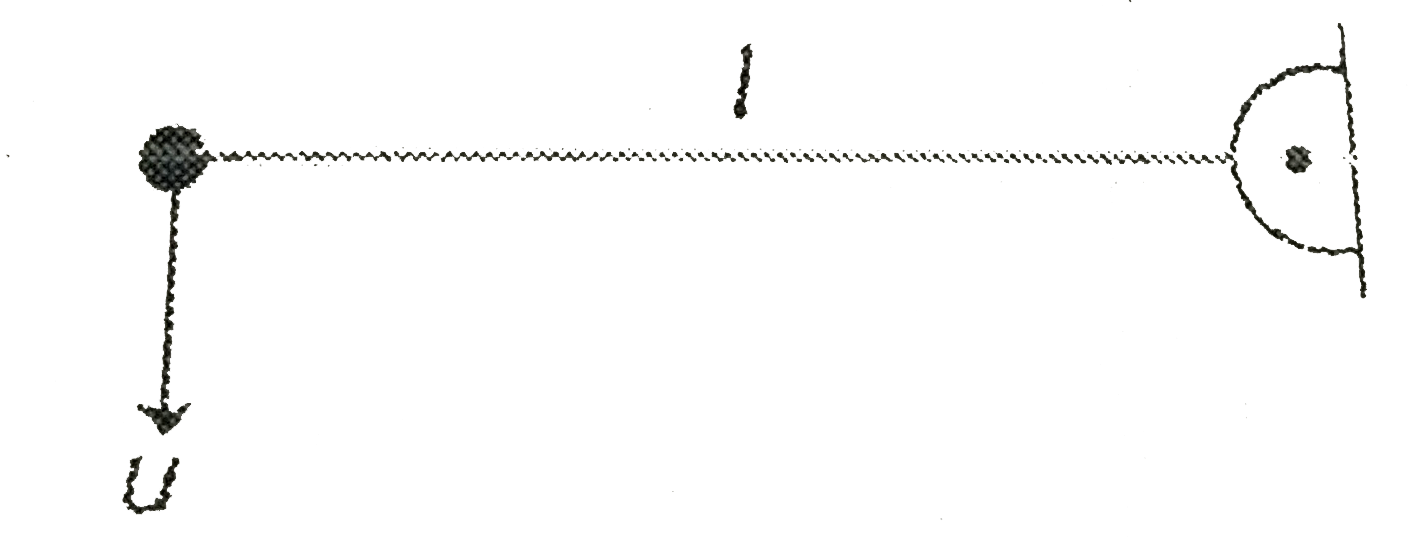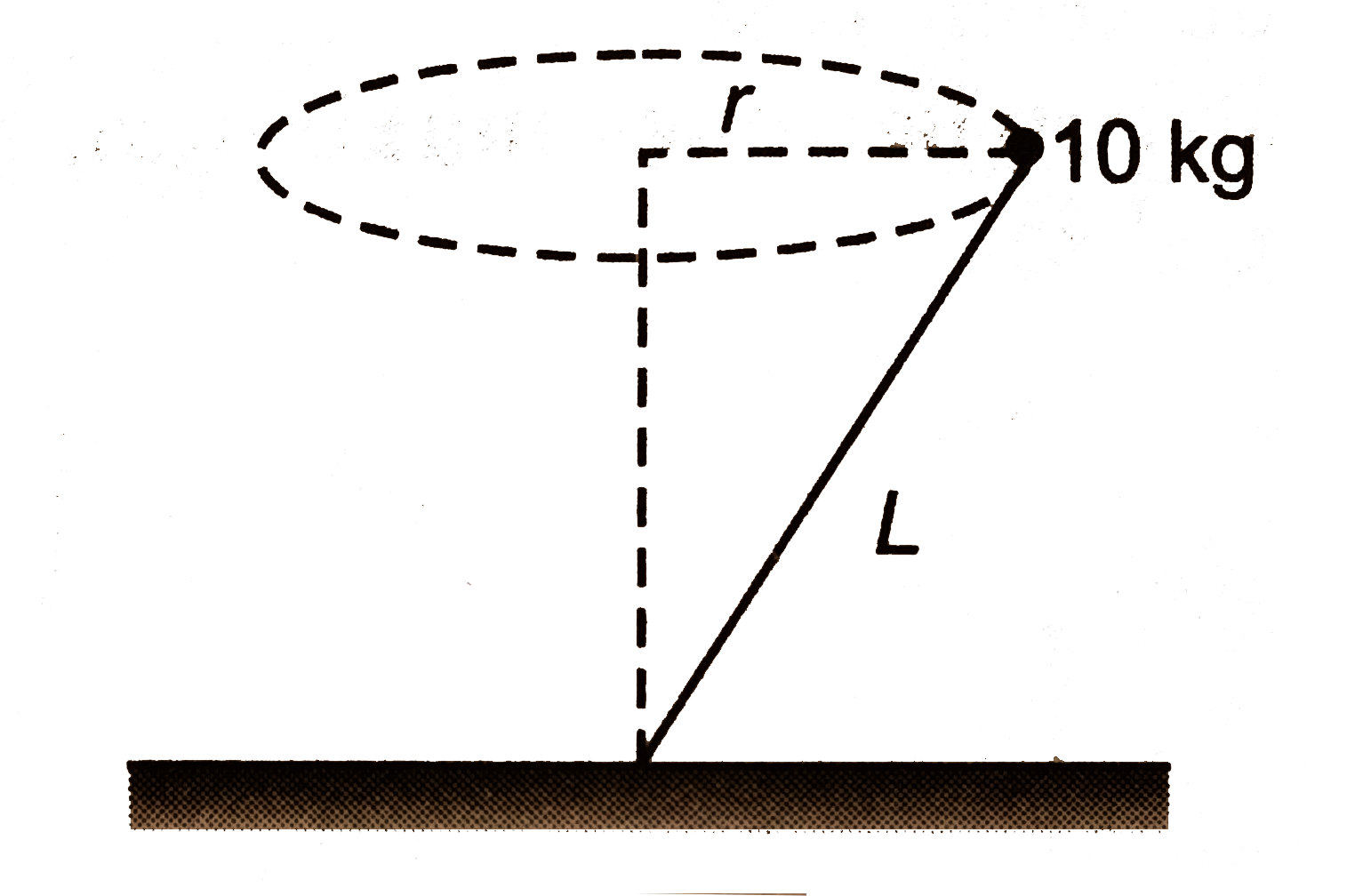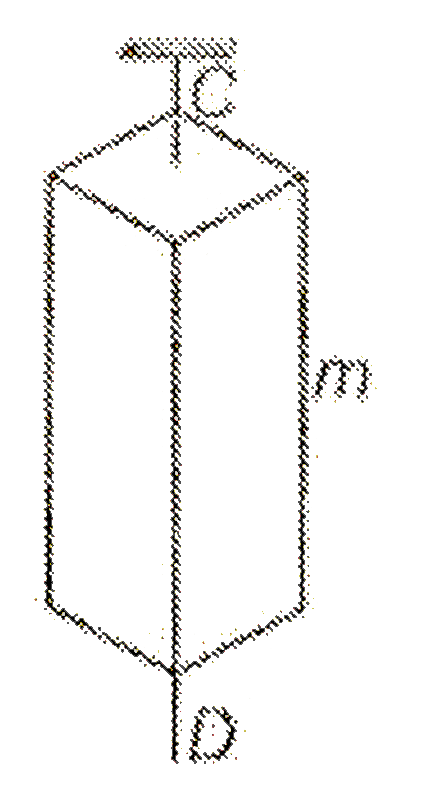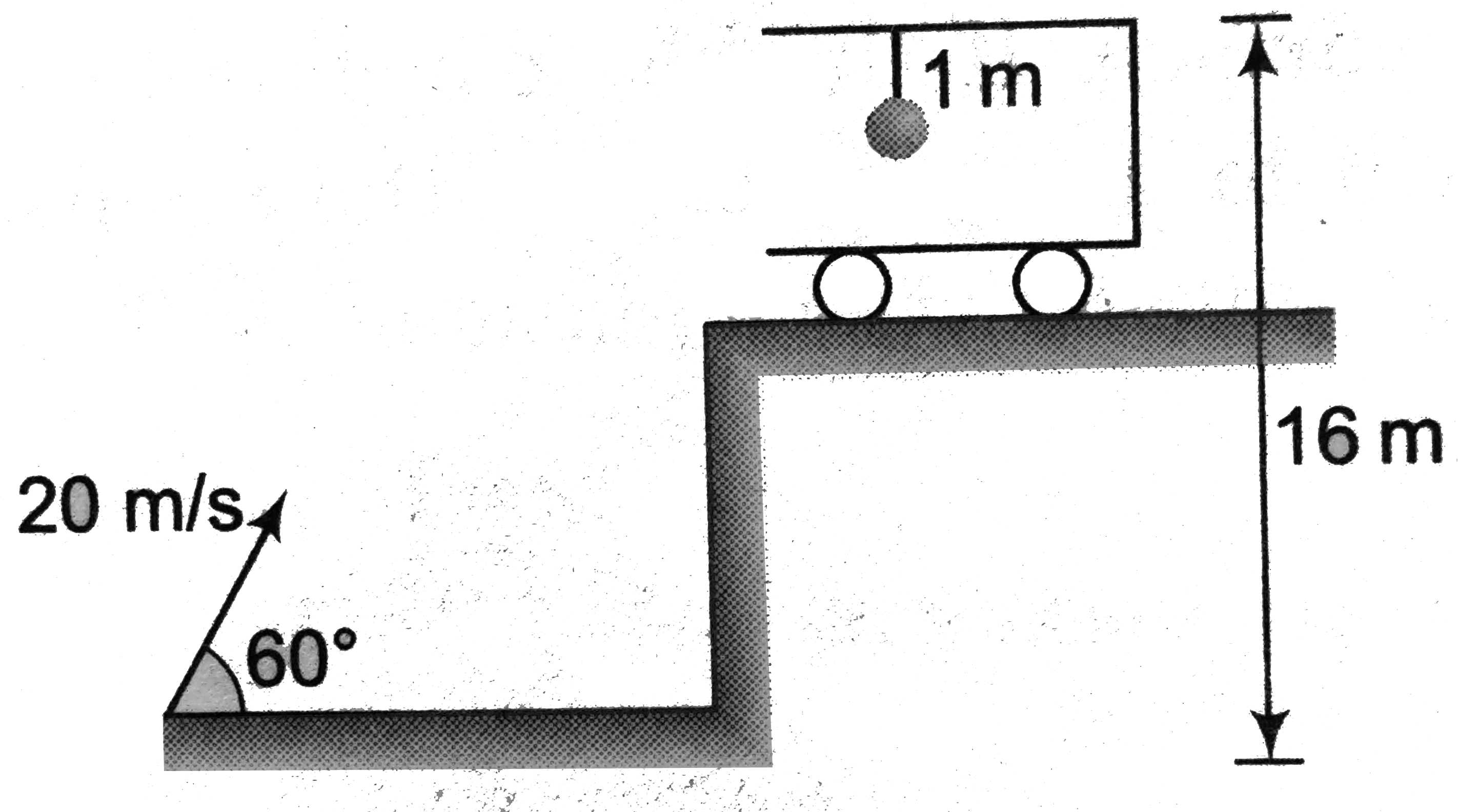A 50−kg ball is attached to one end of a 1m cord that has a mass of 0.10kg. The other end o the cord is attached to a ring that can slide on a frictionless horizontal shaft AB, as shown in the diagram.
A horizontal blow is delivered to the cord and excites the fundamental vibratiion with a maximum transverse velocity of 15m/s. Assume that the ball remains essentially stationary as the cord vibrates. [g=9.8m/s2]
![A 50-kg ball is attached to one end of a 1m cord that has a mass of 0.10kg. The other end o the cord is attached to a ring that can slide on a frictionless horizontal shaft AB, as shown in the diagram. A horizontal blow is delivered to the cord and excites the fundamental vibratiion with a maximum transverse velocity of 15m//s. Assume that the ball remains essentially stationary as the cord vibrates. [g=9.8m//s^(2)]](https://d10lpgp6xz60nq.cloudfront.net/physics_images/FIT_JEE_PT3_P1_E01_252_Q01.png)
The frequency of the fundamental vibration is 17.5Hz
The amplitude of the motion is 13.6×10−2m
If the blow is delivered as an impulse to a stationary cord, the wave function for the cord is y(x,t)=Asin(πx/2L)sinωt, where the ball is located at x=0 and positive x-axis is along the string.
The period of the pendulum motion of the hanging ball is 2 sec, approximately.
The correct Answer is:A, B, C, D
v=√Tμ=√50×1×9.80.1=70m/s
λ4=1⇒λ=4m⇒f=fλ=704=17.5Hz
vpmax=ωA⇒A=vpmax2πf=152×3.14×17.5=0.136m=13.6×10−2m
Topper's Solved these Questions
- TEST PAPERSBOOK - FIITJEECHAPTER - TEST PAPERSEXERCISE - PHYSICS
747 Videos
- SIMPLE HARMONIC MOTIONBOOK - FIITJEECHAPTER - SIMPLE HARMONIC MOTIONEXERCISE - Assignment Problems (Objective) (Level-II)
20 Videos
- WORK, ENERGY AND POWER BOOK - FIITJEECHAPTER - WORK, ENERGY AND POWER EXERCISE - COMPREHENSIONS ( Comprehension-II)
5 Videos
Similar Questions

A ring of mass m is attached to a horizontal spring of spring constant k and natural length l0. The other end of the spring is fixed and the ring can slide on a horizontal rod as shown. Now the ring is shifted to position B and released Find the speed of the ring when the spring attains its natural length.
View SolutionA 4 kg balls is swing in a vertical circle at the end of a cord 1 m long. The maximum speed at which it can swing if the cord can sustain maximum tension of 163.6 N will be
View Solution
Knowledge Check
A ball of mass m is attached to one end of a light rod of length l, the other end of which is hinged. What minimum velocity v should be imparted to the ball downwards, so that it can complete the circle ?
 A√glB√5glC√3glD√2gl
A√glB√5glC√3glD√2glA 10kg ball attached at the end of a rigid massless rod of length 1m rotates at constant speed in a horizontal circle of radius 0.5m and period of 1.58s , as shown in the figure. The force exerted by the rod on the ball is (g=10ms−2)
 A158NB128NC110ND98N
A158NB128NC110ND98NA heavy block of mass m is supported by a cord C attached to the ceiling, and another cord D is attached to the bottom of the block. If a sudden jerk is given to D, then
 Acord C breaksBcord D breaksCcord C and D both BreakDNone of the cords breaks
Acord C breaksBcord D breaksCcord C and D both BreakDNone of the cords breaks
A shell of mass 1kg is projected with velocity 20m/s at an angle 60∘ with horizontal. It collides inelastically with a ball of mass 1kg which is suspended through a thread of length 1m. The other end of the thread is attached to the ceiling of a trolley of mass 43kg as shown in figure. Initially the trolley is stationary and it is free to move along horizontal rails wihtout any friction. What is the maximum deflection of the thread with vertical? String does not slack. Take g=10m/s2.

View SolutionTwo point masses of 3.0 kg and 1.0 kg are attached to opposite ends of a horizontal spring whose spring constant is 300Nm−1 as shown in the figure. The natural vibration frequency of the system is of the order of :

View SolutionA copper wire of negligible mass, length l and corss-section A is kept on a smooth horizontal tabel with one end fiexed. A ball of mass m is attached to the other end. The wire and the ball are rotating with an angular velocity ω. If elongation in the wire is Δl, obtain the expression for the Young's modulus.
View SolutionA small object of mass m, on the end of a light cord, is held horizontally at a distance r from a fixed support as shown. The object is then released. What is the tension in the cord when the object is at the lowest point of its swing?

View SolutionA cord is wound round the circumference of a solid cylinder radius R and mass M. The axis of the cylinder is horizontal. A weight mg is attached to the end of the cord and falls from rest. After falling through a distance h.

View Solution